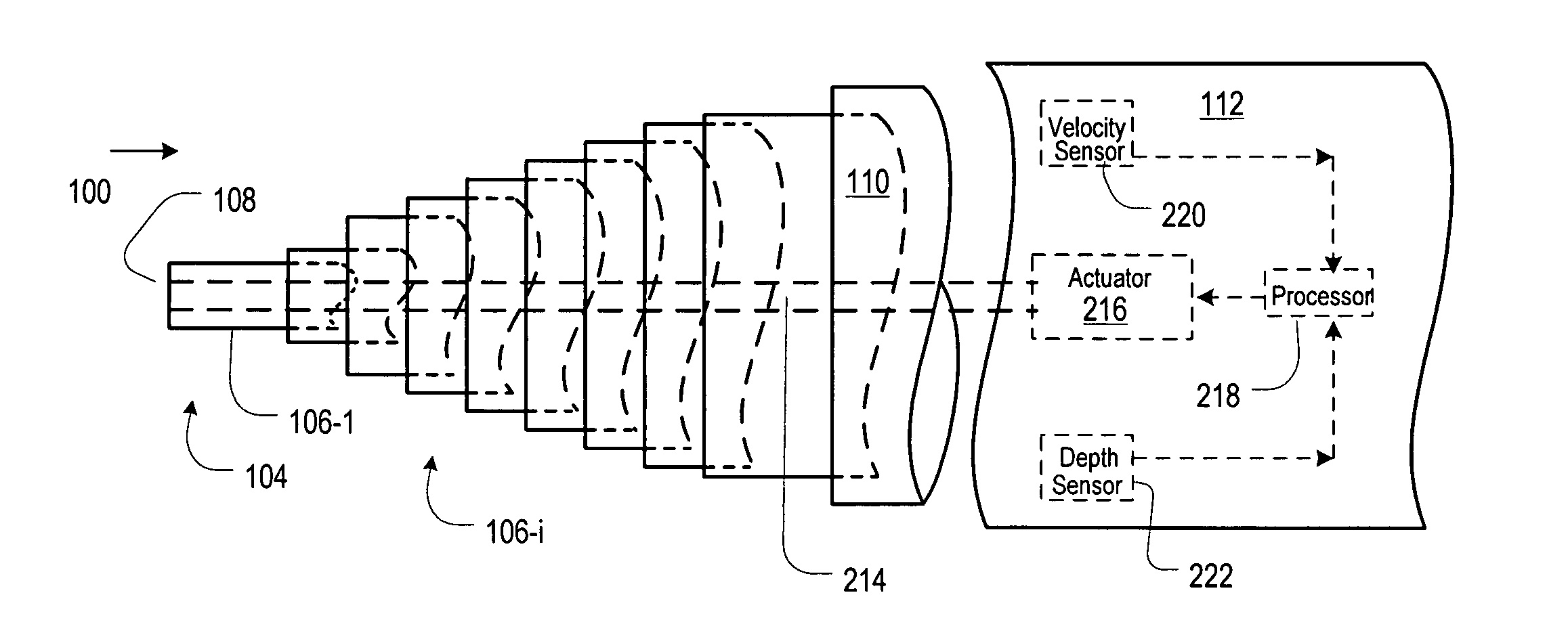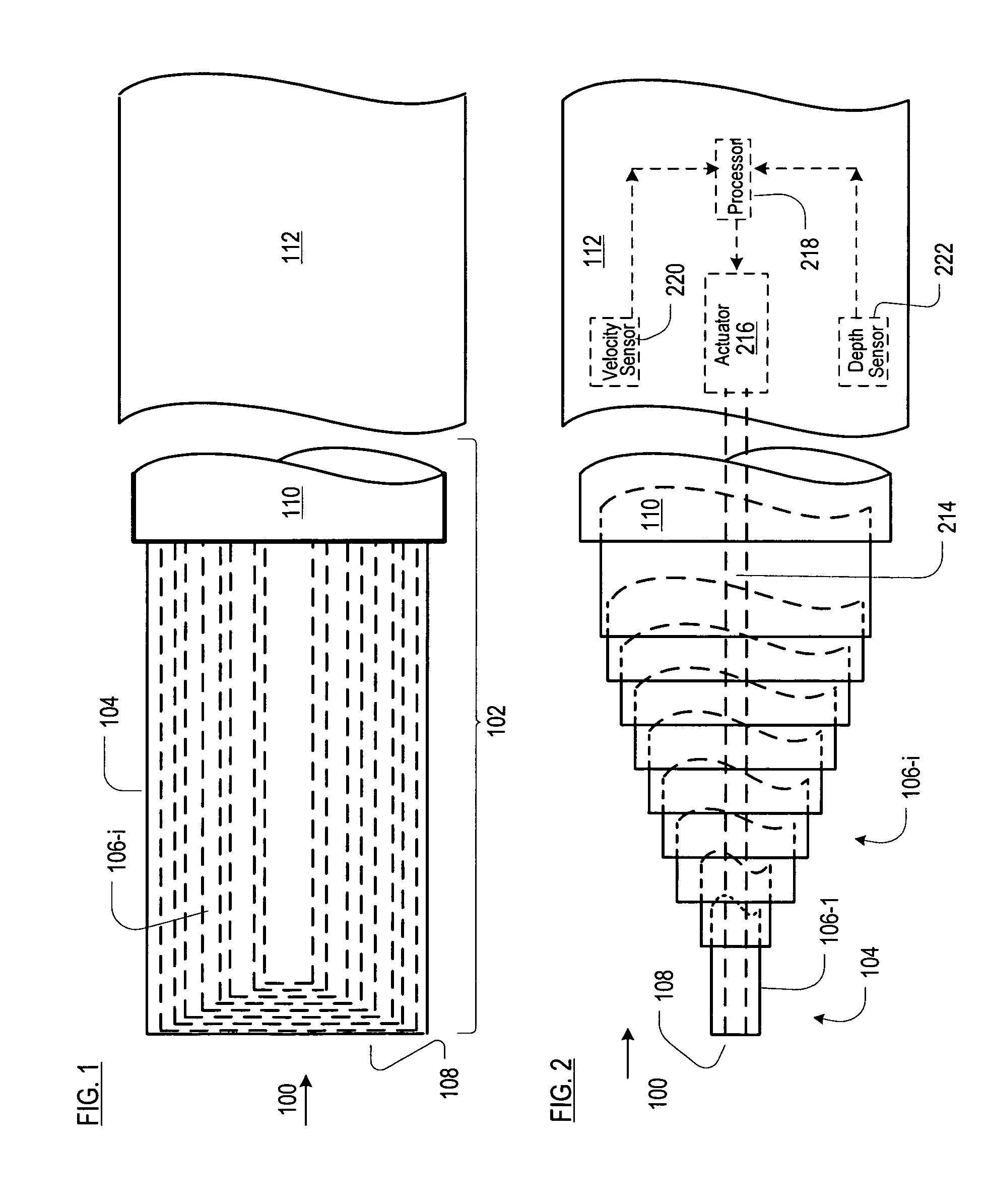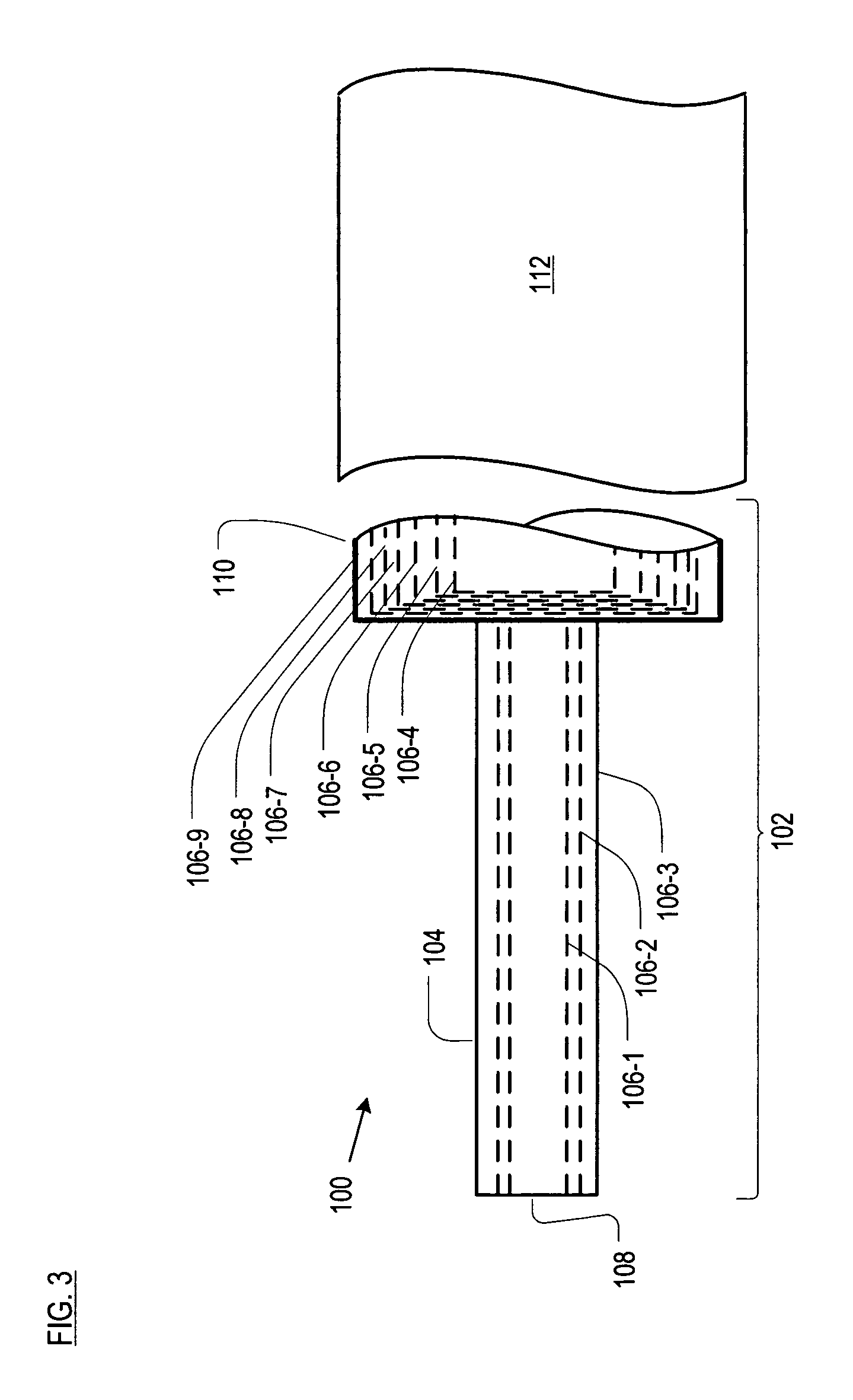Cavity-running projectile having a telescoping nose
a projectile and telescopic technology, applied in the field of underwater projectiles, can solve the problems of projectile loss, stalling, etc., and achieve the effect of increasing distan
- Summary
- Abstract
- Description
- Claims
- Application Information
AI Technical Summary
Benefits of technology
Problems solved by technology
Method used
Image
Examples
Embodiment Construction
[0018]FIG. 1 depicts projectile 100 in accordance with the illustrative embodiment. The projectile includes nose 102 and body 112 (both shown in partial section). Nose 102 comprises forward-most section or cavitator 104.
[0019]Forward face 108 of nose 102 is blunt so that when projectile 100 achieves suitable velocity, a cavity-running mode of operation is created. In particular, the blunt face 108 pushes aside water as it advances. When the hydrodynamic pressure of water that is pushed aside overcomes the ambient static pressure, the water vaporizes. The vaporized water forms air bubbles, which coalesce to form a “cavity” in the water. If enough bubbles are formed, the cavity will be large enough to completely engulf the projectile (with the exception of the blunt tip of the nose). Since the projectile is then surrounded by air, rather than water, hydrodynamic drag is substantially reduced.
[0020]For the foregoing reason, forward face 108 and / or segment 104 is therefore referred to a...
PUM
 Login to View More
Login to View More Abstract
Description
Claims
Application Information
 Login to View More
Login to View More - R&D
- Intellectual Property
- Life Sciences
- Materials
- Tech Scout
- Unparalleled Data Quality
- Higher Quality Content
- 60% Fewer Hallucinations
Browse by: Latest US Patents, China's latest patents, Technical Efficacy Thesaurus, Application Domain, Technology Topic, Popular Technical Reports.
© 2025 PatSnap. All rights reserved.Legal|Privacy policy|Modern Slavery Act Transparency Statement|Sitemap|About US| Contact US: help@patsnap.com



